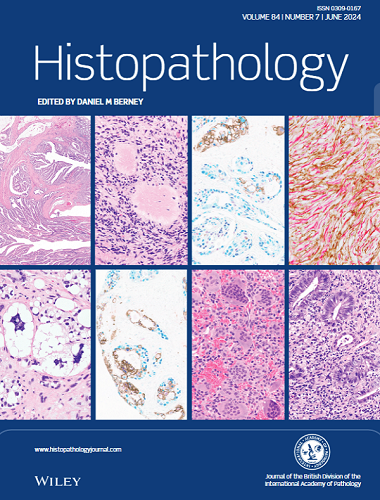Intranodal thyroid inclusions revisited: a morphological analysis and application of BRAF VE1 immunohistochemistry
Abstract
Aims
The diagnosis of intranodal thyroid inclusions (ITIs) is controversial. We aim to investigate their clinicopathologic features and utilize immunohistochemistry (IHC) to support the diagnosis.
Methods and Results
Forty-one cases of incidentally found ITIs between 2019 and 2023 were categorized into three groups, namely, Group A: thyroidectomy due to papillary thyroid carcinoma (PTC) with regional lymph node dissection (n = 33), Group B: thyroidectomy due to benign thyroid disease with incidental perithyroid lymph node sampling (n = 4), and Group C: surgery due to other head and neck cancers with lateral neck lymph node dissection (n = 4). The overall incidence of ITIs was 4.17% (33/792) in Group A and 0.76% (4/524) in Group C. All ITIs sufficient for study were negative for BRAF VE1 IHC. HBME-1 and galectin-3 IHC were also negative in all analysed cases. Although various degrees of nuclear changes were present in ITIs, classical PTC nuclear features, i.e. pseudoinclusions, nuclear grooves, and chromatin alterations, were less commonly seen (0%, 29.3%, and 51.2%, respectively) than in metastatic PTC (90%, 95%, and 95%, respectively) (all P < 0.001). Interestingly, 77.3% (17/22) of cases with lymph node metastasis in Group A had coexistence of ITIs and metastasis in the same lymph node. During follow-up, two cases in Group A had PTC recurrence without accompanying ITIs, while none in Group B or C had recurrent thyroid lesions.
Conclusion
We propose key diagnostic features for ITIs incorporating morphology and BRAF VE1, HBME-1, and galectin-3 IHC. The distinction between ITIs and metastatic PTC can be clinically relevant.


 求助内容:
求助内容: 应助结果提醒方式:
应助结果提醒方式:


